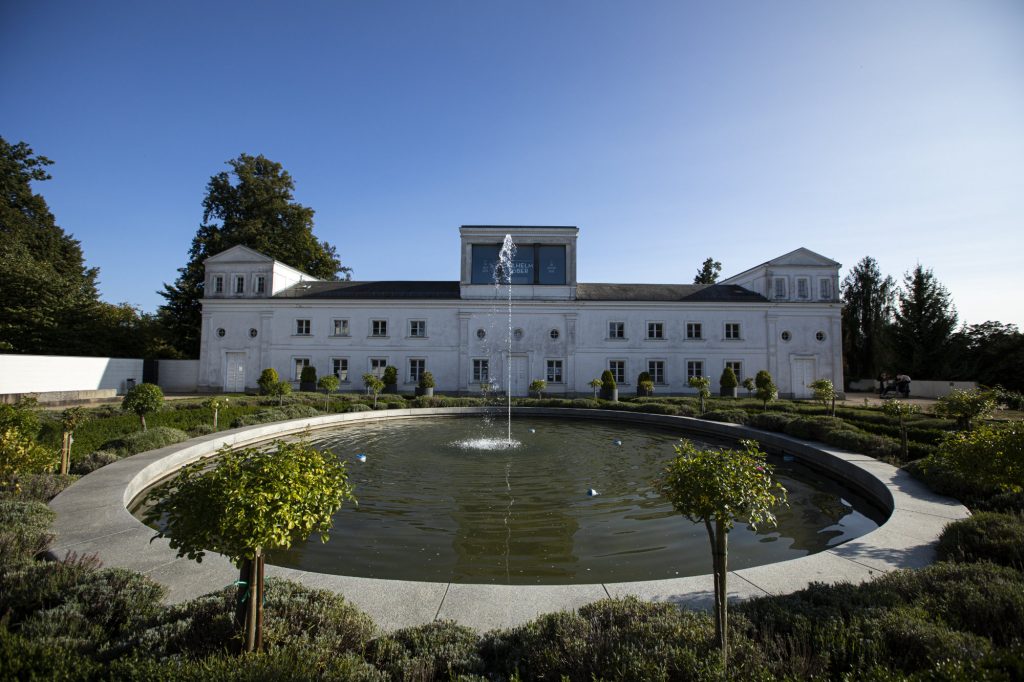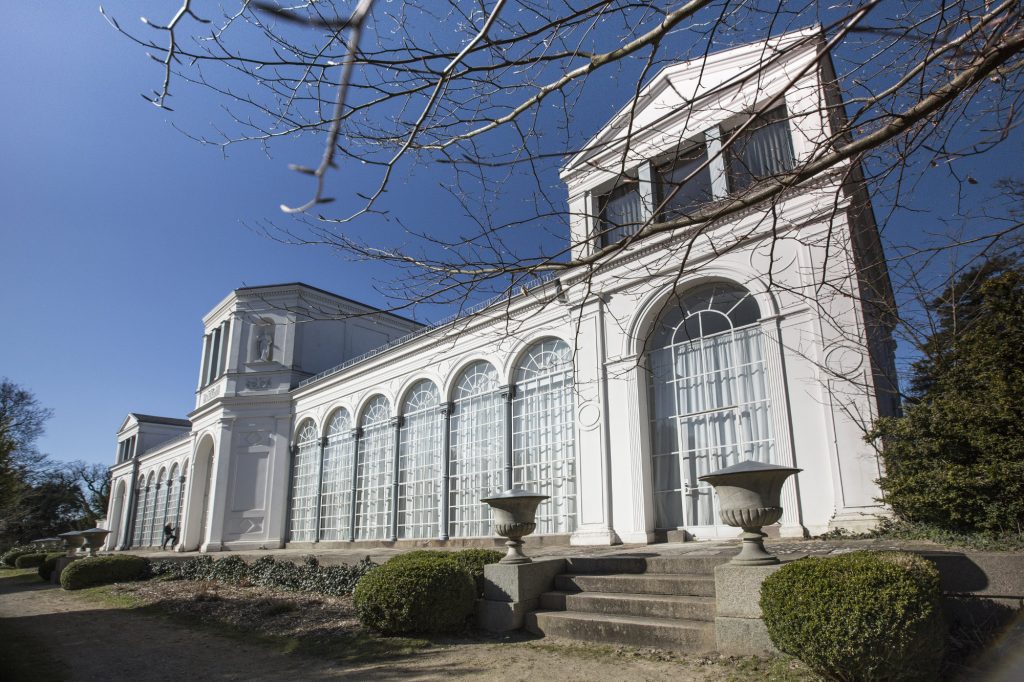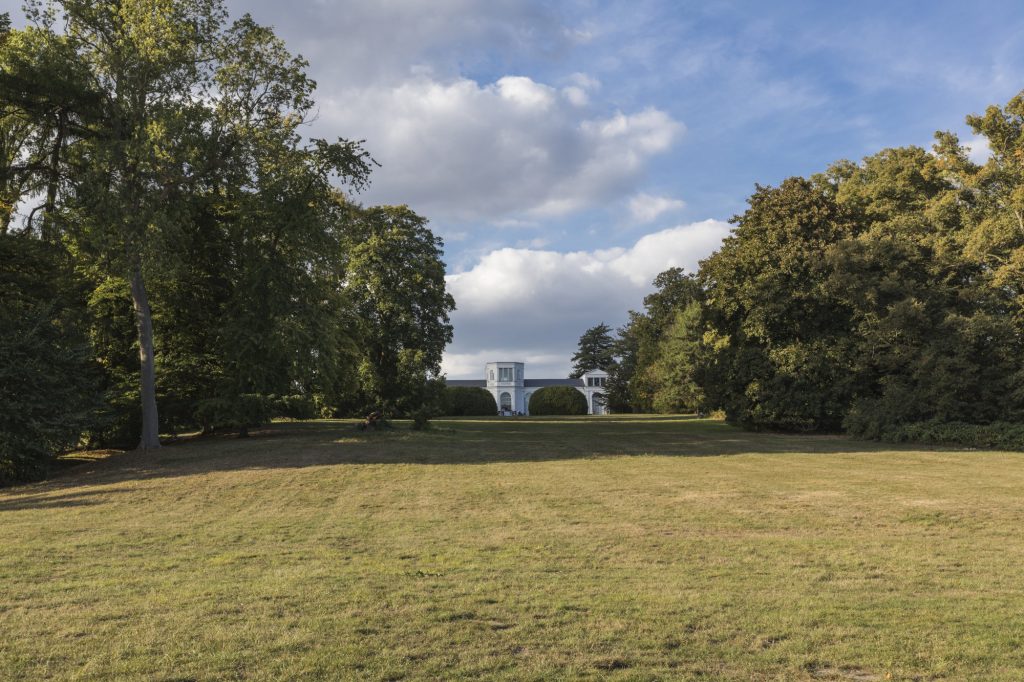
In the 18th century, on the initiative of Count Moritz Ulrich I zu Putbus, a pleasure garden based on the French model was created. This also included the creation of a vineyard on today’s Orangerieberg.
The orangery or greenhouse was built in 1824 in place of the Belvedere, which was demolished in 1804/05, and an ice cellar (1816-19) according to plans by Karl Friedrich Schinkel. The current form dates back to 1853 and was designed by the Berlin architect August Stüler.
Until 1945, the orangery was mainly used to acclimatize foreign trees for the park and to overwinter the potted plants grouped around the palace in summer. The building was also used for festive events.
After 1945, some of the rooms had to be used as apartments for resettler families.



Seit 1973 waren in der Orangerie die Stadtbibliothek der Lesesaal und die Kurverwaltung mit der Putbus-Information untergebracht. Schon damals wurde mit der Ausstellungstätigkeit in der Galerie begonnen.
Seit 2018 ist die Kulturstiftung Rügen Mieter dieses besonderen Hauses und zeigt hier wechselnde Ausstellungen.
Auf der Parkseite der Orangerie, die hier durch verglaste hohe Rundbogenarkaden die Blicke auf sich zieht, liegt auf einem Marmorpostament die Kopie der Skulptur „Sterbender Gallier“. Das Original ist im Museum des Kapitols in Rom zu sehen. Vor dem Schlossbrand im Jahre 1865 war diese Skulptur im Schlosshof aufgestellt.
Basically, to apply for marriage at the registry office of the place of residence of a partner, the following must be submitted:
What other documents you have to submit to the registry office to register your marriage depends on your personal situation.